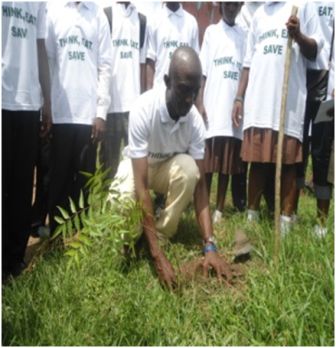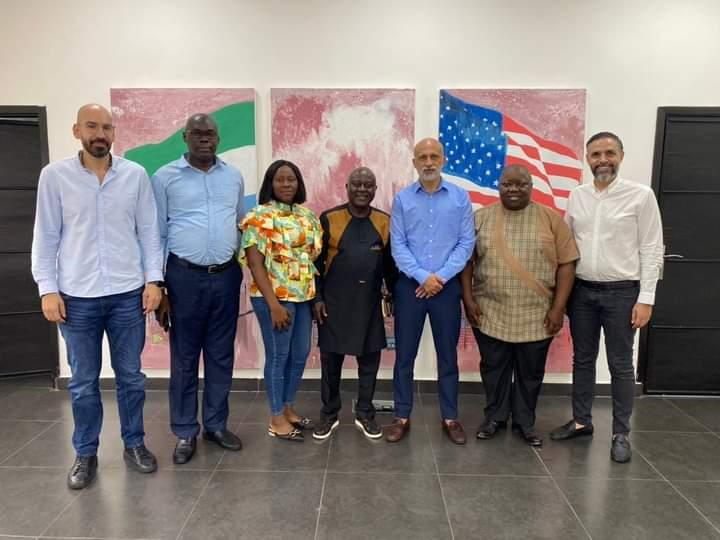How Can Tree Planting Alleviate Multidimensional Poverty?
Our world today is facing many serious challenges. Apart from the current global pandemic, there are two issues that are most urgent to address: the environmental destruction of planet earth and the serious impoverishment and unbearable living condition of many of its inhabitants, particular in rural areas. To create a better and sustainable future for all, we need joint efforts and local solutions for these global threats.
Tree planting is one strategy that offers many benefits in this regard. Planting fruits and cash crops trees in rural communities can create income and employment opportunities, whilst at the same time improve environmental conditions and contribute to climate change, adaptation and mitigation.
The ecological benefits of trees have been well known for many years. Interest and research on their social impact has also gradually increased in recent decades, as has attention to multidimensional poverty–the assumption that poverty cannot be measured in monetary terms alone. Yet, comprehensive studies, specifically on the relationship of trees and multidimensional poverty are still lacking.
Nevertheless, it is clear that fruit tree-planting projects and the income they generate not only help alleviate monetary poverty, but directly impact many different areas of life. However, not all people benefit equally from such projects, and issues of land ownership as well as traditional gender roles largely determine the benefit that can be derived from them.
A Study of trees potential for multidimensional poverty alleviation in Morocco.
A recent study developed in cooperation with High Atlas Foundation (HAF) investigated the relationship of fruit trees and multidimensional poverty in Morocco. HAF is a US and Morocco-based NGO that focuses on sustainable development project in areas such as, Agriculture, Empowerment, Youth Development and Education, and has planted more than Four Million Fruit Trees in Morocco, and today operates 14 Nurseries in partnership with local communities.
Now, for the first time, the social effect of these tree planting projects have been extensively reached through 2020 Household Survey in two villages in Toubkal in the High Atlas Mountains. Both villages had very similar conditions in terms of location, environment, as well as village size and structure, but had major differences in terms of their tree planting. The number of reported trees-mainly walnut, cherry, and apple-was about five times higher in one of the villages (2856 trees by 25 households as opposed to 579 by 23 households in other village).
Investigating the potential of tree planting for poverty alleviation, the study addressed the interconnection between fruit and tree agriculture and multiple aspect of poverty in general, as well as in the specific Moroccan context. Therefore the Multidimensional Poverty Index (MPI), which measures poverty in the dimension of health, education, and living standards, was used as an instrument and adopted to the local situation.
Because of the underlying multidimensional approach to poverty, the research was able to shed light on various aspects of the phenomenon that go beyond traditional monetary measures. The concept of Multidimensional Poverty does not define poverty by measures of income or consumption alone; Rather, like in Amartya Sen’s capability approach, it can encompass various factors, such as education, gender, health status, place of residence, or social security, that directly or indirectly affect people’s ability to lead self-determined lives, free from poverty.
The study showed that the village with more trees had significantly lower poverty level (a Lower MPI and Lower population share of people identified as multidimensionally poor). In addition, the people of this village not only experienced fewer multiple deprivations, but also fewer individual deprivations in most MPI indicators (except for improved sanitation and ownership of several assets). In particular, there were large differences in long-term child mortality, children’s school attendance, and households’ main cooking fuel.
Specifically, fewer household reported the loss of a child in recent decades, more school-aged children were attending school, and more households use clean cooking fuel; such as gas.
Many of these development advances are due to the growing wealth in the wake of tree planting projects that began in the commune as early as 1990s. Several community members highlighted the many positive changes that have taken place since. For example, Mohamed Himmi, former President of the commune, described how rising prosperity has enabled greater mobility among the population, and in this context, increased opportunities for better employment and education in urban centers.
But fruit trees are not only a source of household income. Their fruits also provide many health benefits and are an important addition to families’ diets, helping parents and children live healthier lives. These examples illustrate how trees contribute to families’ sustenance and income, and how they can be used to alleviate multiple aspect of poverty. Many more positive effect on people and the environment could be listed, only some of which the study conducted was able to observe.
Vulnerable Groups falling through the Cracks
Although planting fruit trees has a positive impact on various aspects of human life, these benefits mainly apply to only some privilege groups, whilst some of the most vulnerable groups of people may not benefit equally from increased wealth and social developments.
Especially in terms of gender equality, projects that focus only on planting fruit trees often don’t improve the prospects of women in the village, as their benefits are very limited, due to male control over land and household income. This was evident by the fact that while the wealthier Toubkal Village had higher male school enrollment and employment rates, the same could not be said of its women. In fact, although the other village where fewer trees were planted, performed worse overall on most poverty indicators, women participation in education and employment was higher because of more individual and collective awareness and action in those areas.
It is true that female unemployment rate still are strikingly high in both villages, ranging from 89 to 100 percent. However, some villagers are making effort to provide better education for women and girls, and in one village, some girls are now even attending secondary schools, which is a major development in the area. Clearly, developing self-help structures and empowering women has a greater influence on improving their life situation than merely increasing wealth does.
Poor landless farmers are another often-overlooked group when it comes to shared property through tree planting, as this requires at least a small piece of land or a home garden. Therefore, the extent to which one can benefit from trees depend largely on the size of the land available. Conversely, those who own more land and can plant more trees can naturally earn more profits.
The resulting problem is reinforced social stratification, if tree planting projects are not well implemented and monitored, leaving behind those for whom poverty alleviation is actually most urgent. Providing land to the landless and planting on communal land would help to counteract these tendencies.
Moving Forward
Specially targeted interventions are therefore needed to reach the most vulnerable groups and to spread the benefits of tree planting to all community members. This study enabled HAF to rethink and inspire new projects. The High Atlas Foundation is now seeking financial partners to implement a women project to plant organic gardens and build a tree nursery on unused community land in one of the Toubkal villages. Also, an existing nursery is now completely female-managed. In addition, women have taken action to improve their living situation by engaging in empowerment workshops facilitated by HAF.
Exciting projects like these will further improve the positive impact of fruit trees on Multidimensional Poverty in the future. Let’s hope that more NGOs, researchers, and development practitioners will realize the great potential of such projects and help to plant trees to create a better future on our planet.
By Nora Martetschlager Germany
Stay with Sierra Express Media, for your trusted place in news!
© 2022, https:. All rights reserved.






